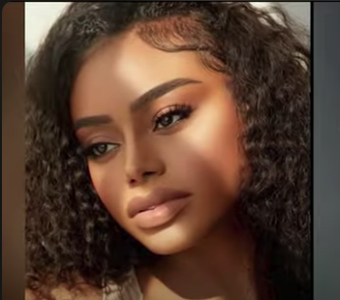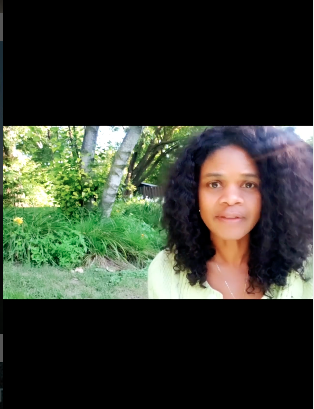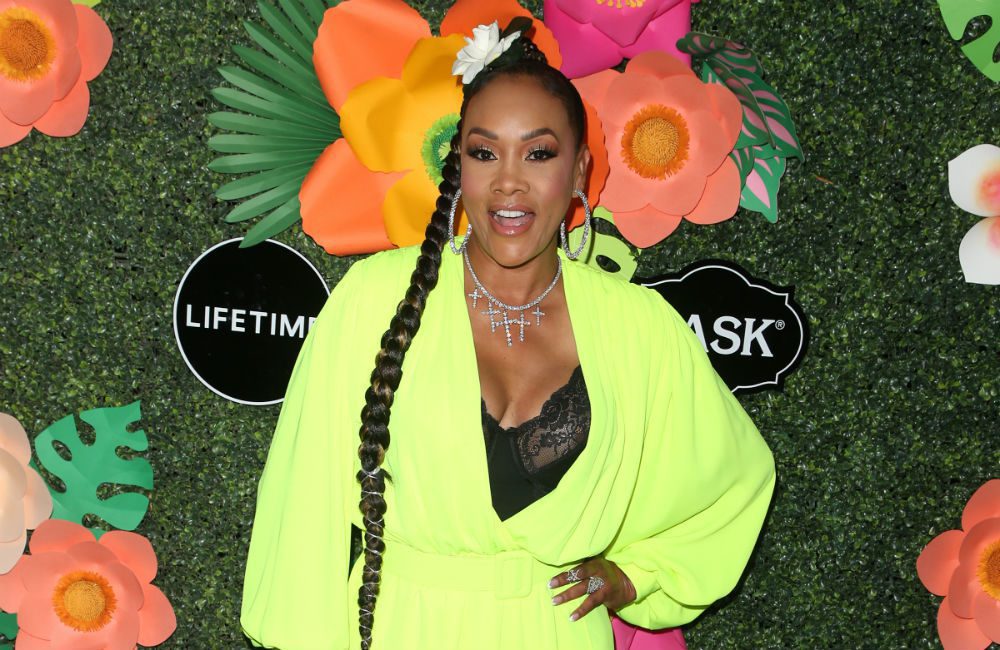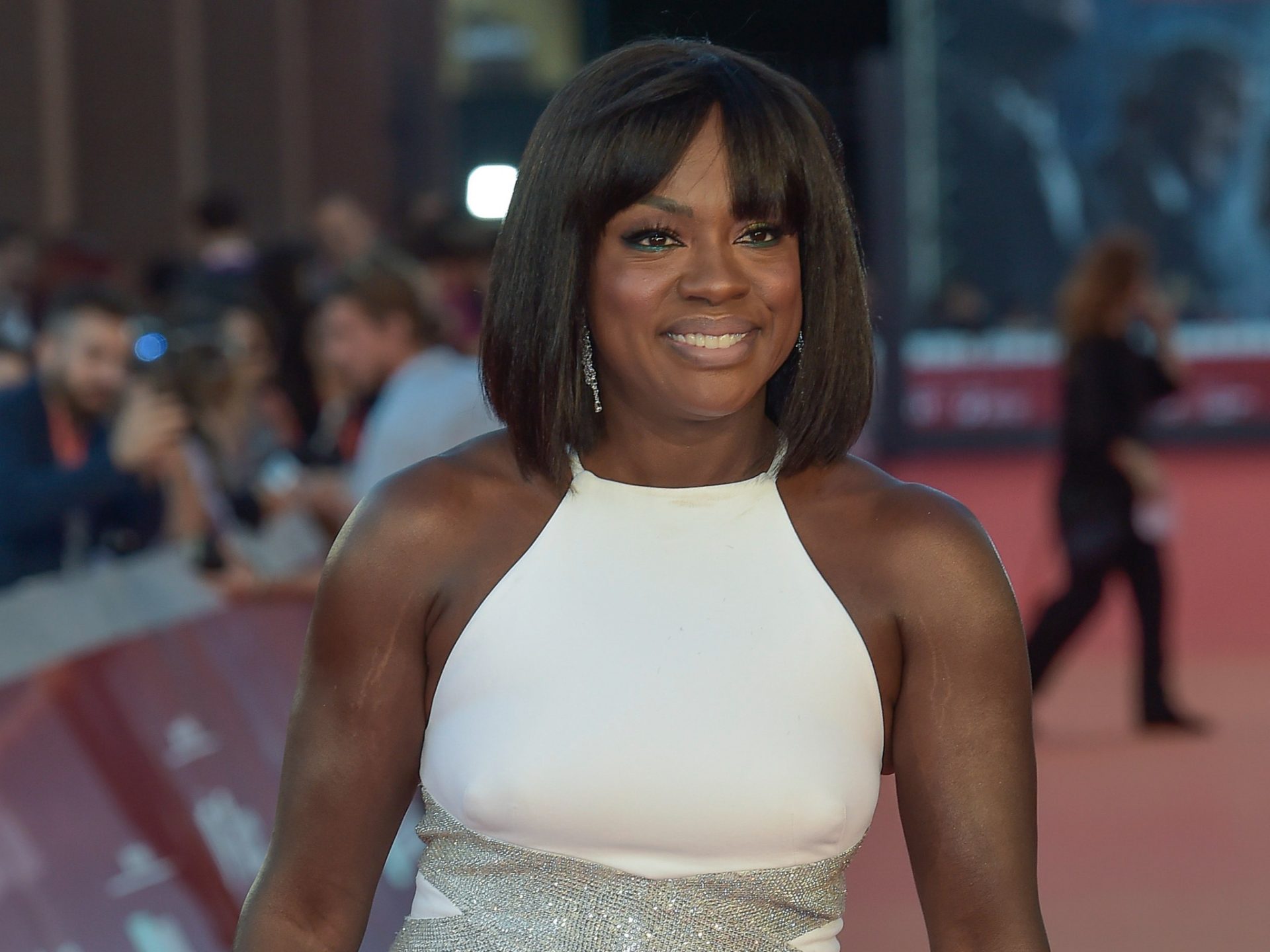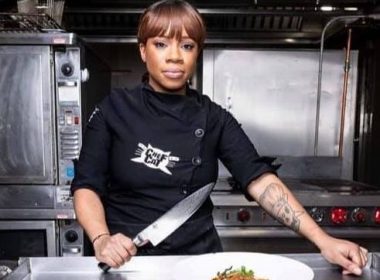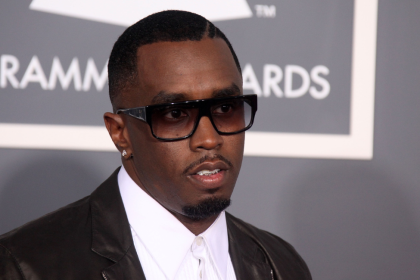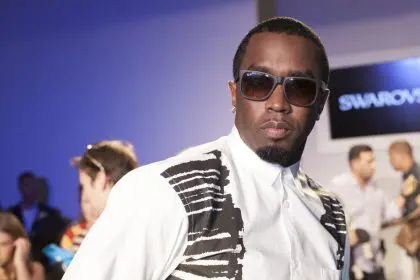Can we end colorism? A case for conclusions
Through centuries of suffering under the discriminatory effects of colorism within the Diaspora, many Blacks wonder if a change in the ethnic group’s historical perspective on the beauty and acceptability of lighter skin and thus the disagreeable tone and unacceptable nature of darker skin is possible. And justifiably so. Within the rhetoric of the culture-based debate is a derisive set of unspoken rules and regulations beset with prejudice against darker-skinned Black people, rules that infiltrate all aspects of life, including social, professional, romantic and familial affiliations. While some conclude that, while slow, progress and change are possible; most people of color, particularly dark-skinned people of color, espouse that the cultural cue is here to stay. Moreover, “bright” (read: light) will always be right; and, well, dark just isn’t lovely.
Within the debate of the future of colorism inside the Diaspora, many intellectuals point to a history of imposed divisions based upon color. Historical documentation notes that most clear color discrimination within Black ethnic groups dates back to the beginning of the “maafa,” the African holocaust, which starts with the trading and transporting of Africans around the world and the invasion and ensuing colonization of nations throughout Africa. During this period and following, Blacks were initiated into an imperialistic Western ideology that naturally showed preference for “whiteness,” which, as it was virtually impossible within their group, translated to an understanding of the worth and glory of “lightness.” For example, abducted African women who found themselves in bondage at Ghana’s Elmina or Cape Coast castles, what should be called slave dungeons, during the 1400s and 1600s respectively, were often raped and held as sex slaves by their European captors. When some of the women became pregnant, their evil captors would move them to apartments and homes close to the dungeons where they could care for and raise their mixed-race children. As could be predicted, these mixed-race children, kin to the European slave captors, received preferential treatment. It should be noted here that while many people today can only imagine that the slave dungeons operating off the coast of West Africa existed for a few years, the Atlantic Slave Trade, when millions of captured Africans were shipped from dungeons dotting the shores of West Africa, went on for centuries. Further, abducted Africans often spent weeks or months in the dungeons before dying or being sent off on ships. Thus, the psychological implications and impact of the new mixed-race children, who were the result of rape, had time to brew among the captured. Directly, many African women were forced to consider rape as a way out of a certain fate of death in the filthy dungeons or an uncertain (yet predictable) fate after boarding one of the slave ships on the other side of the “door of no return.” For some, the sad short game must have been to attract the eye of her captor. The despicable, though understandable long game would be to get pregnant and produce a child, thus ensuring some form of protection. For them, there was a clear and direct message that aligning oneself with “whiteness” meant safety. And producing “lightness” meant livelihood.
But that was centuries ago. What of the impact over time? How could this occurrence and occurrences like this be connected to the ongoing Diasporic baffling battle Blacks face with colorism?
Noted scholar and lecturer, Dr. Joy DeGruy, has some ideas. The author of Post Traumatic Slave Syndrome: America’s Legacy of Enduring Injury and Healing and Post Traumatic Slave Syndrome: The Study Guide, purports that due to multigenerational trauma resulting from centuries of chattel slavery, Blacks today suffer from “predictable patterns of behavior” associated with a syndrome that supports “the belief that [Blacks are] inherently/genetically inferior to Whites.” For many intellectuals, DeGruy’s Post Traumatic Slave Syndrome chronicles and more importantly legitimizes a kind of community-wide mental illness-psychological condition that perpetuates a Black inferiority complex as a vestige of slavery. To add, connecting DeGruy’s PTSS to the theory of epigenisis, a scientific hypothesis which implies that through time one’s thoughts and behaviors can impact him or her at a cellular level, triggering changes in his or her genes, some believe PTSS has been passed down from generation to generation of Blacks within the very software of their DNA. While that might sound farfetched to some when considering Darwin’s fixed notion of DNA composition, advanced scientific theory connects epigenetic inheritance to the descendants of other groups who have undergone gross psychological and physical trauma. Most notably, this year, Biological Psychiatry, a noted journal of “Psychiatric Neuroscience and Therapeutics” published “Holocaust Exposure Induced Intergenerational Effects on FKBP5 Methylation,” a research article revealing the results of a study of Jewish Holocaust survivors and their children. In the article, researchers at New York’s Mt. Sinai Hospital conclude, “The gene changes in the children could only be attributed to Holocaust exposure in the parents.”
Connecting the scientific dots back to PTSS and those African sisters making the most perverse decisions for survival one could imagine, unpacking how Diasporic Blacks have arrived at their present conundrum concerning colorism isn’t beyond the capabilities of human understanding. Through centuries of traumatic programming, Blacks have learned and subconsciously internalized at the genetic level the glory of whiteness, and by proxy, lightness. Today, it is why the lighter Brazilian girl in Rio is romantically preferred over the darker Brazilian girl in Bahia. It is why the coal-colored Black man in South Africa is less likely to find gainful employment than his mixed-race “Coloured” brothers, even within the Black community. It is why African American parents in the United States immediately check the color of their newborn baby’s fingertips and ears to predict how “dark” the baby will become. It is why on the arms of nearly every successful male athlete, musician, businessman, entrepreneur, entertainer, actor or politician, one will find a woman who is either white or two shades lighter than he. Colorism is a condition, psychological and biological, that controls preference and maintains the superiority of whiteness.
So, how can this be undone? As mentioned above, many say it can’t. But, some do believe hope is on the horizon for dismantling colorism. To the former position that colorism is here to stay, if a reader believes everything I’ve said here, then the answer would really have to be no. Nothing can be done to correct colorism. It’s a symptom associated with a mental disorder, PTSS, that happens to be passed down through generations via science (no less). So, no. Blacks will never move beyond this issue. It’s here to stay, right?
But here’s the thing. As an African American woman, I know how painful living in a post-slavery world has been for me. There is a history that has been passed down to me that is at once beautiful and then traumatic. Tragic. Relentlessly unforgiving at every turn. And Blacks learn this when they are so young.
Further, I know my blackness is associated with a syndrome. It is something that completely impacts the way I fulfill my space in the world and/or how the world accepts or rejects my presence (and then I respond in-kind) — from birth to death. Just as it would if I was a wolf turned dog or a goldfish born in a fishbowl. It impacts everything. And I do believe it’s genetic.
But, then, while I believe these things, thus making colorism and other inferiority ailments plaguing the Diaspora irreversible, I would have to admit that I’ve seen some shifts. Some changes. Changes that disprove the theory I support. In the last few years, I’ve seen Black women around me fully embrace their natural hair. They go get their permed hair cut off and end up at Target looking for some “kinky curly pudding” to add to their teenier-weenie-Afro. I’ve seen Black men of all shades love the hell out of Black women. Dark Black women. Really dark Black women. They love them. They marry them. They have dark babies with them. And they love those babies, too. And, last, when I look in the mirror, I, a dark woman, say to myself: “You bad! Girl, you look good.” Is that always easy? No. Especially not when I haven’t dyed my edges in a month. But that has nothing to do with my color. That’s a whole other topic. But my color? My distaste for myself? It’s never about my color. I love my color. I know some people don’t. Be me? I love my color. So, maybe I don’t have the symptom of colorism associated with the syndrome, after all. Or maybe I’ve changed. Maybe I’ve grown.
So, to answer the question of the Diaspora moving beyond colorism, for myself, anyway, I believe it’s historically and scientifically unlikely, but certainly personally and culturally possible. Yes, I believe I had the syndrome. But I changed. I grew. And, so can others. So do others.
And believing this is awesome because it means so much more than ending colorism. It means we can end all of the other “isms”-racism, sexism, ageism. While humans are born with certain proclivities, we can change. We can grow. We can evolve. If we want to.
Eka Eyoh
What inspired you to become a model?
When I was younger I struggled with the aspect of learning how to love myself. I grew up in a predominantly White area and honestly felt out place when it came to my appearance. I disliked my unique features, such as my curly hair and the gap between my two front teeth. It was not until I started modeling that I learned how to embrace my unique features and love myself. Modeling gave me the confidence that I lacked as a young girl, which is why I have such a drive and passion for it.
Have you faced any challenges making it in the industry because of the color of your skin?
In my opinion, there is a lack of diversity in the modeling and fashion industry. I have done and seen many runway shows where there was only one to three models of color in the entire show. I have done shoots where I felt like they only cast me to meet their diversity quota. I think it places a negative image on modeling and the fashion industry, and raises the question, if there are so many beautiful and talented models of color, why are they not getting work? As a model of color it creates the challenge of always feeling like I have to prove myself, and constantly competing in an industry where I may be overlooked because of the color of my skin.
Are there different standards of beauty for women of color?
When it comes to the representation of women of color in the media, I noticed there was a standard of beauty that the media always portrayed — straight hair, light eyes, thin body shape, light skin tones. I felt this was a misrepresentation, because women of color come in many forms of height, weight, hair types and skin tones. There should be no such thing as a set “standard” when it comes to beauty, as all forms of beauty should be embraced.
What advice would you give other aspiring models who are trying to break through?
My advice for aspiring models is you need to have the drive and passion for this industry because it is very cutthroat and competitive. As a model, consider yourself as your own business. You will need to make wise decisions and realize your time, money, and effort will have to be invested in order to be successful. Most importantly, always stay true to yourself. In this industry you may be faced with situations or decisions that you feel are not right. Having the ability to stand up for yourself is very necessary and important in this industry.
Social media handle:
Instagram: eka_e
Britt Bradley
What inspired you to become a model?
I was inspired to become a model when I was teased as a child because of how skinny I am. I felt very insecure and felt I had no purpose. My sister, Raven, was the one who pointed out to me that I was made exactly like a model. From that I felt like God created me to be a supermodel.
Have you faced any challenges making it in the industry because of the color of your skin?
I’ve faced many challenges in the industry because of my skin. I would always get on set and photographers would state she’s not as dark as her pictures. Makeup artists are always making my skin some shades darker. Modeling agencies almost always have their Black girl. Most recently, I’ve shot with an African American photographer who was infatuated with shooting light-skinned models with big curly hair. Unfortunately, I was neither and he treated me was if I wasn’t worth shooting because of how I looked. That photographer would always compare models to other models. Basically, belittling me because of my skin tone.
Are there different standards of beauty for women of color?
Yes! There are [different] standards of beauty. I’m always asked what my background is and you can’t just state that you are Black. It’s like someone is asking you to define your beauty so that they can understand it. I’ve also noticed that if you’re going to be a fair or darker tone model your hair should be cut low. After doing this myself, I understand now that it’s more of a convenience thing. Hairstylists who don’t understand your hair texture will most likely ask, “why did you go natural and why are you growing it out?” Lastly, the industry is just obsessed with Black models from different countries and it’s kinda sad. There are very few American Black models who are found to have that exotic look. It’s just not a fair industry. You won’t find your Black girl next door on the cover of Vogue. I have reasons to believe I’ll change that.
What advice would you give aspiring models who are trying to break through?
You can never ever give up! You have to push past the thoughts of negativity and how the industry wants you to look. Be your own version of beauty. Nothing can beat that! Don’t compare yourself. Only worry about you and your task. Always ask yourself why you are doing this.
Social media handles:
Instagram: Brittbradley, Snapchat: Brittbradley Facebook: Britt Bradley
Felicia Smith
What inspired you to become a model?
In 2007, I watched my first Victoria’s Secret fashion show and knew at that moment what I wanted to do. This is when they had models like Selita Banks and Doutzen Kroes and I just fell in love with the entire show. The models were so confident in themselves and had such strong walks. I was in middle school at the time and was getting teased for being so skinny and tall but when I saw them, I was really inspired. People would always ask me or my mom [if I was a] model, so we decided to just go for it and started looking into agencies.
Have you faced any challenges making it in the industry because of the color of your skin?
Fortunately, I haven’t faced any challenges in the industry directly but I have been in situations where I got the impression that I didn’t book a job because of the color of my skin. The industry is definitely becoming more diverse, I’m seeing more and more women of color, but there is still improvement needed.
Are there different standards of beauty for women of color?
Yes, I do feel like there are different standards of beauty for women of color, but I think that is a good thing. If there were one standard of beauty that every race and ethnicity had to abide by then a lot of people would be outcast. The industry is becoming more accepting of Black features, whether it be our hair texture or face structure, it’s being seen as different and beautiful. For example, Maria Borges’ recent transition to embrace her natural Black hair in a cropped Afro has shown that the industry is more excepting of different types of beauty.
What advice would you give other aspiring models who are trying to break through?
I would give the same advice to other aspiring models that I remind myself of every day. Just keep pushing, things may not always go your way but you can’t get discouraged and must remain positive no matter how hard that may be. Always give 100 percent and don’t let any negativity overtake you. Most importantly, don’t compare yourself to others, just focus on being the best that you can be. My mom always tells me what God has for me is for me.
Social media handle
Instagram: Felicia.smith
Makeup artist Alexis Fagan discovers her passion
What inspired you to become a makeup artist?
I discovered my passion for makeup artistry 15 years ago while working as a photo assistant and studio maager for Ernest Washington. I watched as the makeup artists on set would completely transform clients. It was like art to me. They were creating works of art using makeup as the medium and I wanted to try my hand at it. So I started studying facial features, color theory and makeup and fashion trends.
How do you approach beauty as it relates to different skin complexions?
Each person’s complexion is unique. Hydration and a good primer are essential. Color correcting may also be necessary. Most women aren’t one true shade straight out the bottle, so custom blending is the key to achieving a flawless foundation.
In your profession, do you think there is a different standard of beauty when it comes to Black women?
We have been exposed to Western beauty ideals for so long that the appreciation of our own natural beauty is being lost. We tend to shy away from bold colors for the fear of drawing attention to our full lips or even excessive contouring to minimize the size of our noses. Hopefully, we will eventually start to see ourselves as the standard of beauty.
Social media handle:
IG – AlexisFaganMUA
PRODUCTS:
Foundation on all:
AJ Crimson Dual Skin Creme Foundation
On Britt:
Orange lip gloss (OCC Lip Tar “BETA”)
Citron eye liner (Lime Crime “CITREUSE”)
On Eka:
Fuschia lip
(Yves Saint Laurent Creme lipstick “LE FUSCHIA”)
Green eyeshadow (MAC “HUMID”)
On Felicia:
Matte wine lipstick (NARS “VOLGA”)
Metallic eyeshadow (Urban Decay “MOONDUST”)
You got that look: The parameters of Black female beauty
Story by Mikaela Smith
I’m not sure why I ended up at the Payless Shoe Source in The Mall West End, but it was a Friday afternoon and there I was. Actually, one of the three friends I was with wanted to buy some heels and that’s why I was there, but I was more than ready to go. Annoyed because this one guy hadn’t texted me back, I sat on the floor next to the size eight shoes calling him all kinds of names and wishing for a vacation. I was stressed over a boy, a suit-wearing Morehouse man, who not only failed to send me “good morning” texts but who had also proudly told me that Black and Puerto Rican was his “favorite mix,” and he was oddly preoccupied with my long curly weave.
My body was always tense whenever he attempted to play with the fraudulent curls and when he questioned me about why I had “so much” hair. I feared his hands would reach deep enough to touch the kinky braids at the base of my scalp and he could feel for himself that I was all Black. No traces of Puerto Rican to be found. Still, I sat on that carpeted floor glancing at my phone, holding my self-esteem in my hands. Next thing I know a female sales associate, presumably a Black woman, came up to my friends and I.
“You all need anything?”
“No, we’re good,” I answered for the group. She turned to leave, but before she left she turned and looked directly at one of my friends. “Your look is so interesting. I’ve never seen someone who looks like you.” Rumana, the friend being examined, smiled.
The sales associate wasn’t finished, “Yeah, out of everyone you stood out to me.” Rumana blushes.
“I mean, no offense to the rest of you. I don’t mean it like that. It’s just you look so different. Your hair and everything.” The sales associate walks off, Rumana laughs, and I leap off the floor. The friend shopping for shoes had found a pair she wanted and with a noticeable tinge of agitation in my voice, I asked if everyone was ready to go.
We all walk to the cash register and just when I thought the conversation was done, the cashier, a tall Black man, eyed Rumana. Here we go.
“Are you Trinidadian? Or like Brazilian? Indian?”
At that point my mind was buzzing. Eyes squinted, mouth twisted up. What exactly about her made her stand out? Was she some kind of special Black while the rest of us were just average? Why didn’t Amira, the friend buying the shoes, who has greenish-hazel eyes, dark skin, and a perfect kinky ‘fro, stand out? I mean hell, she was the one at the cash register spending her money so why no compliments for her?
The truth, a truth that people rarely want to admit, is that oftentimes Black culture celebrates beauty when it is in spite of Blackness. If you have dark brown kinky hair, dark skin, and full lips, you’re just an average Black girl. Nothing too special there. But, if you have long curly hair and lighter skin, oh you must be from from BrazilTrinidadIndia, a mystical land of exoticism, even if your parents are African Americans born and raised in Philly.
Black culture is obsessed with exoticism. There is a dominant and culturally shared idea of what Blackness is supposed to look like and people who fall outside of that categorization are praised and revered. Black people, more specifically Black women, who fall outside of the dominant image of “blackness” ironically become the standard for what Black beauty is supposed to look like.
‘I think I look like other Black people’
First of all, what does it mean to say someone looks like anything? What does it mean to look Black? Asian? White? When someone says something like that they are actually referring to a person’s phenotype. Let’s take it to biology class for a second:
Phenotype: A phenotype is an individual’s observable traits like height, eye color, and hair. The genetic contribution to the phenotype is called the genotype. Some traits are largely determined by the genotype (the genes), while other traits are largely determined by environmental factors.
It is when we tie up phenotype with race that issues arise. Phenotype and race are not mutually exclusive. So yes, a Black person can have blue eyes. As the definition states phenotype is an individualistic thing, differing from person to person. But somehow we have come to assign each “race” with very specific phenotypes. An imaginary person with specific physical characteristics comes to mind when we think of each “race.” Asian? Slanted eyes, straight black hair. Hispanic? Tan skin, curly hair. Black woman? Big lips, big butt, dark skin, and kinky hair you can’t run a comb through.
“I think that people have certain ideas about what being and looking Black means. Your hair has to be a certain texture. You have to have a certain complexion.” These are the words of Rumana Kasime, the young woman who was having her look simultaneously praised and investigated in that Payless. Kasime, a junior urban studies major at Spelman College, identifies as a Black woman but says that sometimes other Black people don’t see her as one, “I’m questioned about my blackness and my look by Black people more than any other race,” she says. “It’s really weird because I feel like I look like other Black people … so I don’t understand.”
Ethiopian-born and of mixed Ethiopian and Yemeni descent, Kasime has self-described light brown skin, a narrow and tiny nose she wears a gold ring through, and loose curly hair that falls beyond her shoulders. However, she does not feel like those physical features should negate her blackness or prevent her from being able to identity solely as a Black woman. After all, Ethiopia is in Africa.
Dr. M. Bahati Kuumba, scholar-activist and woman studies professor at Spelman College, feels that Black women are divided, especially when beauty is involved. She states, “Difference [aesthetic differences amongst black women] becomes division.” That division is born out of Black culture’s lack of recognition and admiration of all the different types of Black female beauty as being equal. Instead, different looks are put up in competition against one another and in the hierarchy of Black beauty; mixed beauty is sitting pretty at the top of the pyramid.
Dear Black girl: The White man says you’re ugly
The idea that Blacks have been virtually brainwashed to appreciate all things White and Eurocentric is not brand new. While the natural hair movement and other Black female empowerment movements have had positive effects, rejecting the idea that “White is right” is a constant practice, a constant fight. For Black women, it is the practice of reconditioning the mind to see beauty in the blackness that society, both Black and White, says is ugly. Black culture’s whitewashed ideals of beauty puts Black women who happen to have more Eurocentric features in the categories of “other” and “exotic” even if they are indeed Black and identify as such.
Now, make no mistake about it: some of those Black women in that metaphorical category of “exotic” beauty may indeed be drop-dead gorgeous and there’s absolutely nothing wrong with that. However, it is when those women are being admired in spite of their blackness that it becomes problematic. It is when people focus on the alleged “non-Black” features of Black women to call beautiful, that deeper issues arise. Kasime notes that oftentimes when she is complimented on her appearance, especially by Black men, she is told things like “it’s your skin complexion” or “it’s your hair,” that made her stand out. Many even go as far saying, “You’re not like other Black girls.”
The other Black girls
While I was in that Payless I felt like I was one of those “other Black girls.” One of the ones whose beauty never plays out in mainstream media. The Black girl who would get passed up in a video vixen audition, the Black girl you wouldn’t sleep with if you wanted your kids to have that good, good hair.
The stereotypical image of what blackness looks like and the standards of Black beauty are manifestations of Black people’s history of White admiration and Black self-loathing. The dominant message was, and still is to some degree, that Black people are less than. They’re lives matter less, they’re less qualified, they’re less intelligent, and less beautiful. These messages are beaten into the Black mind. Literally and figuratively.
Carrie Mae Weems, a famed Black artist whose work focuses on internalized racism and images of Black womanhood, has a photograph in her 1987-1988 photo collection, Ain’t Jokin, titled “Mirror, Mirror.” Similar to the popular story of Snow White, in “Mirror, Mirror” a Black woman asks the mirror on the wall “who is the fairest of them all?” and a White woman in the mirror responds, “Snow White, you Black b—-, and don’t you forget it!” Dr. Kuumba called my attention to that photograph and although it was not my first time seeing it, the sting I felt while looking at it and reading the caption was no less sharp.
When a Black woman looks in the mirror she is not only viewing herself through her own eyes, but through the eyes of White society, White feminine beauty, White masculinity, Black masculinity, and the Black preoccupation and celebration of European and or other non-Black features. On some days, as a Black woman, calling the reflection in the mirror beautiful, and believing it, is an uphill battle.
Destiny Smith-Brown, a junior psychology major, and a friend who was with me in the Payless shoe store that Friday, agrees. “When Ru [Kasime] was singled out, it made me feel insignificant … it’s like why? What about her hair texture did the lady [the Payless employee] like so much? Like what is it? Is it because it’s closer to European? I just feel like when people [say], ‘oh you’re Black but you still got that look’ it’s because they find out that you might not fully be Black and now you’re really pretty to them.”
Amira Gregory, the green-eyed friend who bought the shoes, and a junior sociology major chimed in as I spoke to Smith-Brown, “Yeah it’s like when you’re Black but you don’t fit that stereotypical look … like you have long hair or whatever, it’s like you have the best of both worlds. People are just so fascinated with white[ness].”
Reclaiming the narrative
Black women hold so much power. Originators of styles and looks that are studied, envied, and endlessly copied, Black women can set the standard. However, everyone must realize that there is no such thing as looking like “a Black woman.” There is no formula. There are no limitations to what Black beauty can look like. A beautiful woman is just that: a beautiful woman. Her beauty does not, and should not, radiate in spite of blackness. So, a special message to anyone who thinks otherwise, to every and anyone who has ever uttered the words “you’re pretty for a Black girl.” Black and beautiful can exist in the same space. Yes, Black can be beautiful. With absolutely no trace of European genes, Black is still beautiful.









